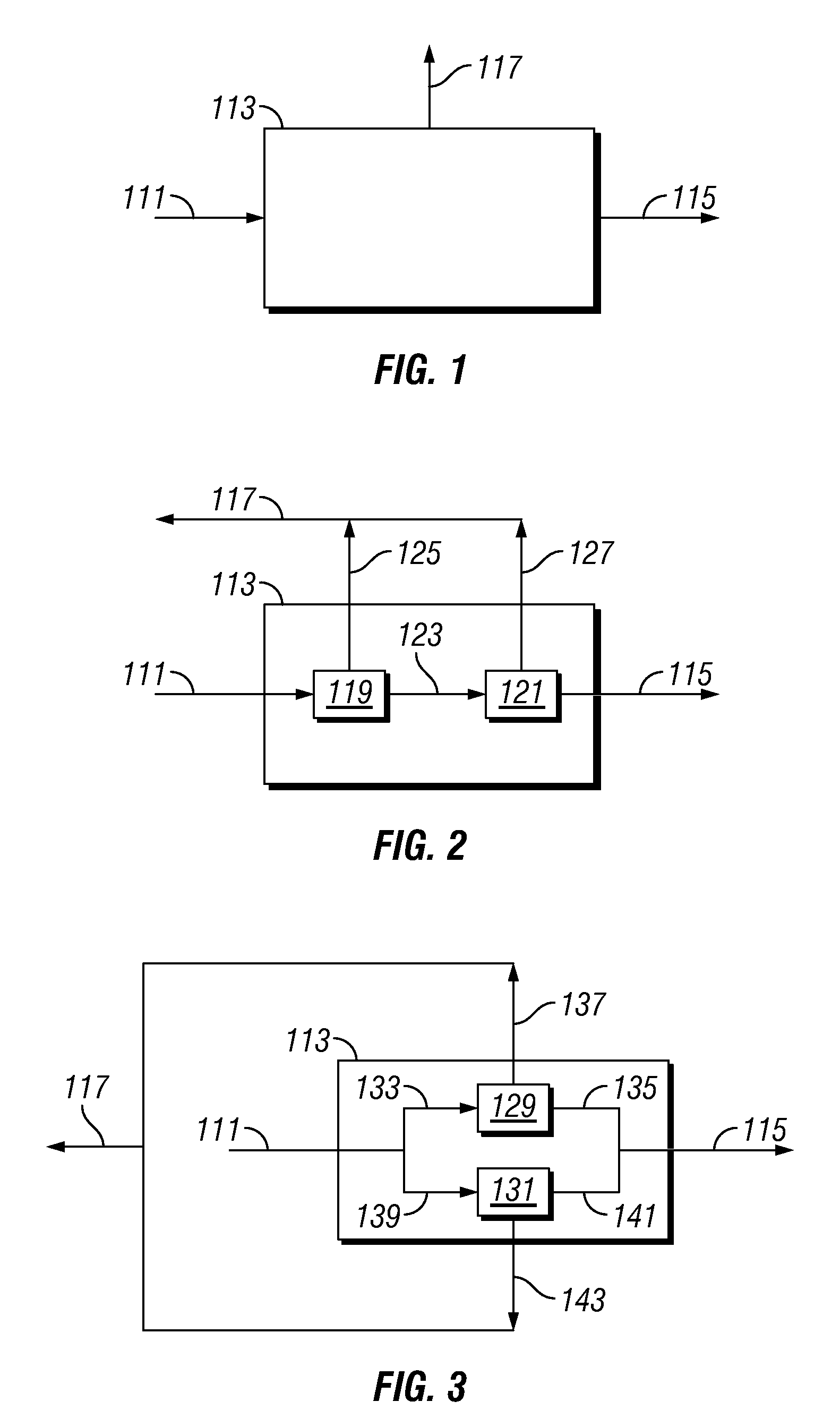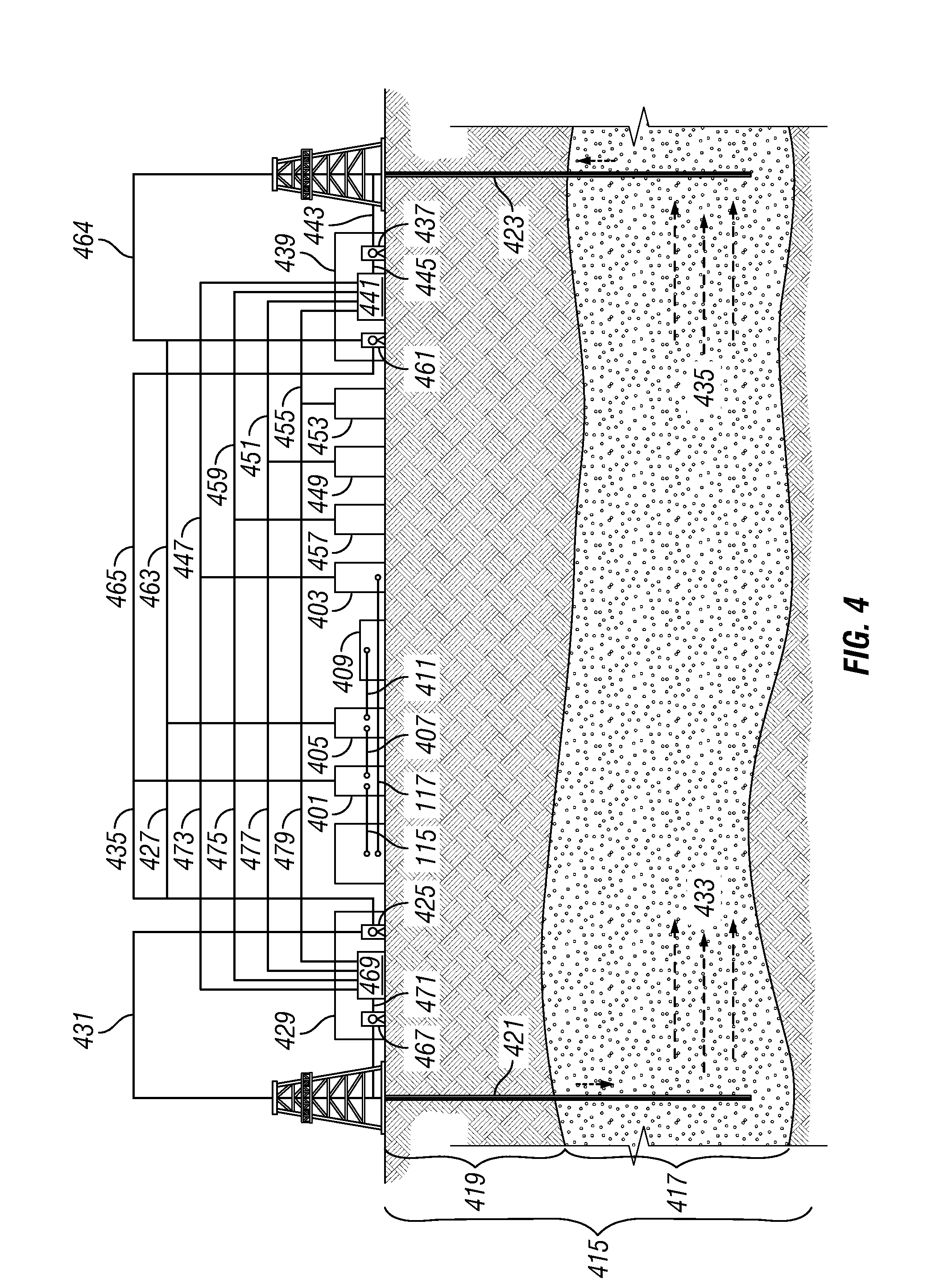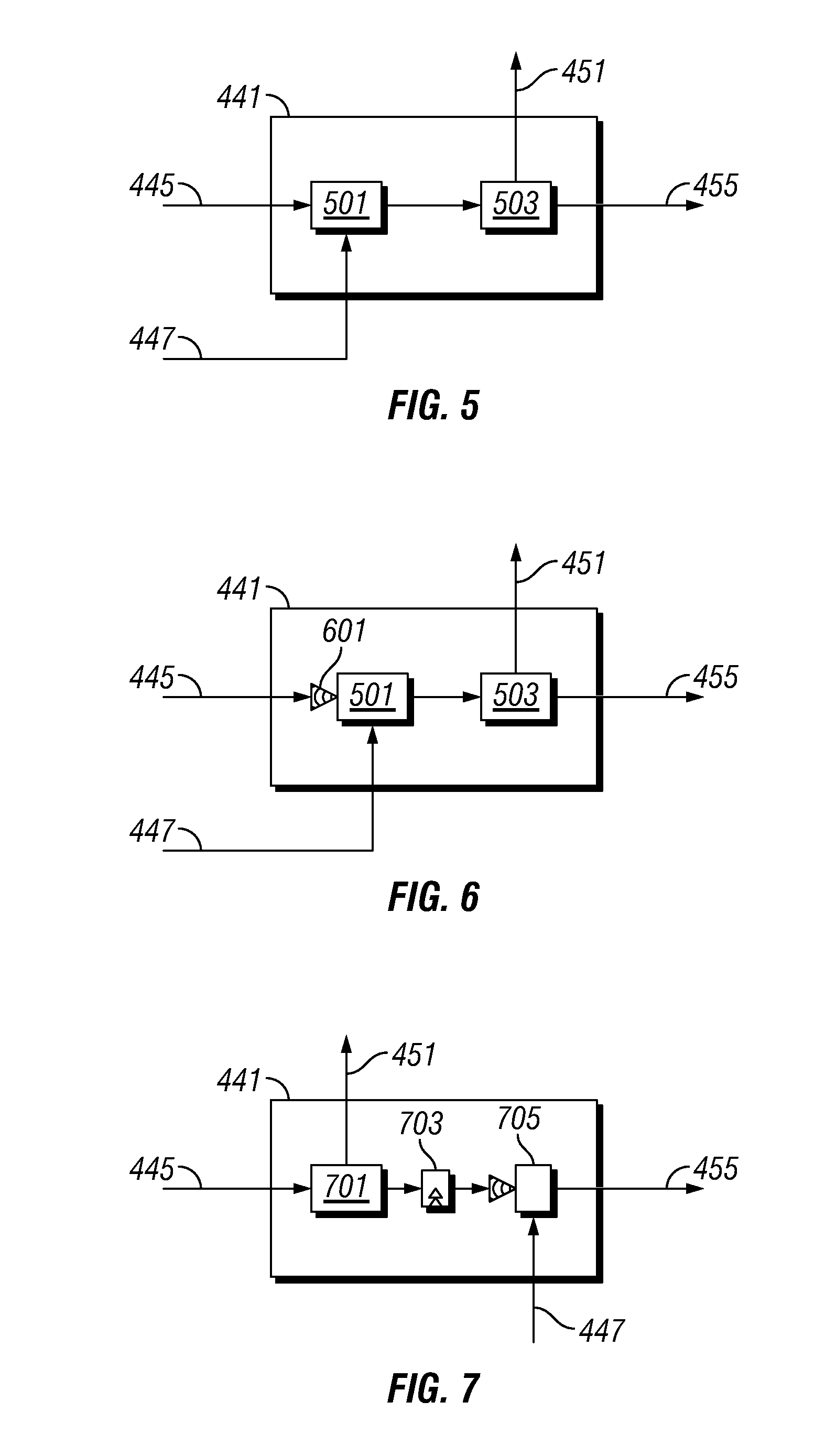Process for reducing viscosity of polymer-containing fluid produced in the recovery of oil
- Summary
- Abstract
- Description
- Claims
- Application Information
AI Technical Summary
Benefits of technology
Problems solved by technology
Method used
Image
Examples
Embodiment Construction
[0022]The present invention is directed to a process in which a brine is used to facilitate reduction of viscosity of an aqueous phase of a fluid produced from an oil-bearing formation in an improved or enhanced oil recovery process utilizing an aqueous polymer waterflood. An ionically charged polymer is mixed with low salinity water having a TDS content of from 200 ppm to 15,000 ppm, where the polymer increases the viscosity of the water. The low TDS content of the low salinity water enhances the viscosifying effect of the polymer, likely by promoting charge induced intramolecular repulsions within the polymer molecules to increase the hydrodynamic radius of the polymer molecules. The aqueous polymer mixture is introduced into an oil-bearing formation, and a fluid comprised of an oil phase and an aqueous phase comprised of water and water-soluble polymer is produced from the oil-bearing formation. A brine having a TDS content that is at least 5,000 ppm greater than the TDS content ...
PUM
 Login to View More
Login to View More Abstract
Description
Claims
Application Information
 Login to View More
Login to View More - R&D
- Intellectual Property
- Life Sciences
- Materials
- Tech Scout
- Unparalleled Data Quality
- Higher Quality Content
- 60% Fewer Hallucinations
Browse by: Latest US Patents, China's latest patents, Technical Efficacy Thesaurus, Application Domain, Technology Topic, Popular Technical Reports.
© 2025 PatSnap. All rights reserved.Legal|Privacy policy|Modern Slavery Act Transparency Statement|Sitemap|About US| Contact US: help@patsnap.com



